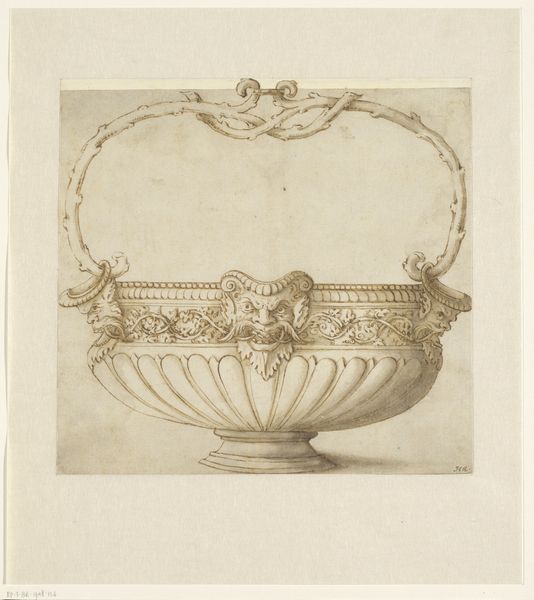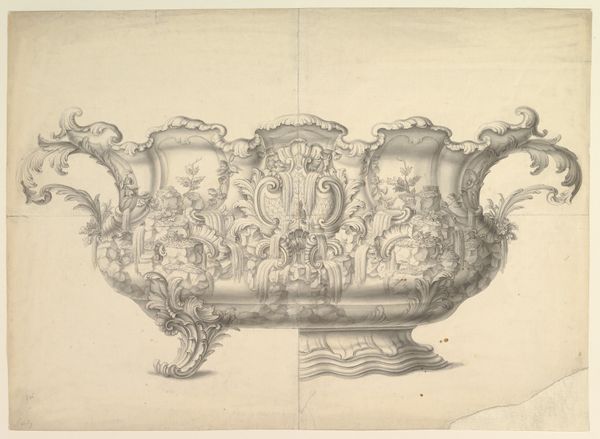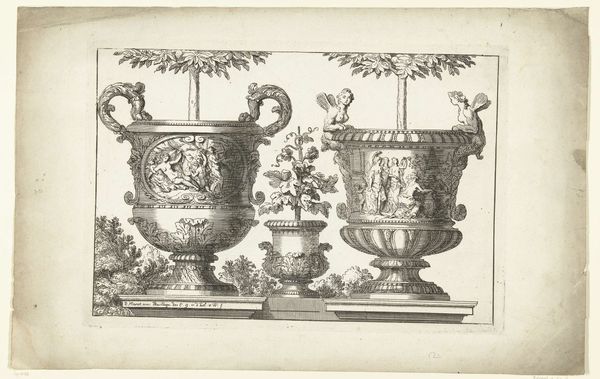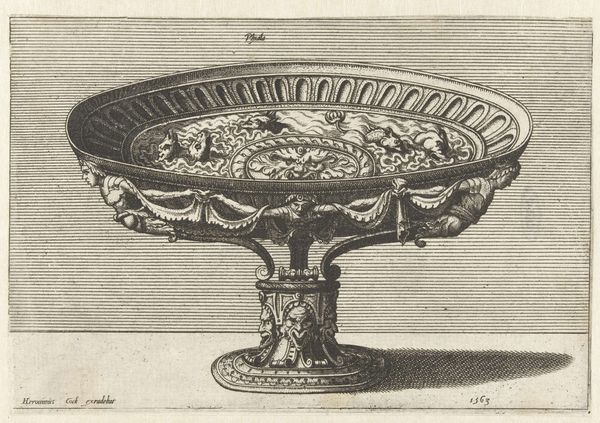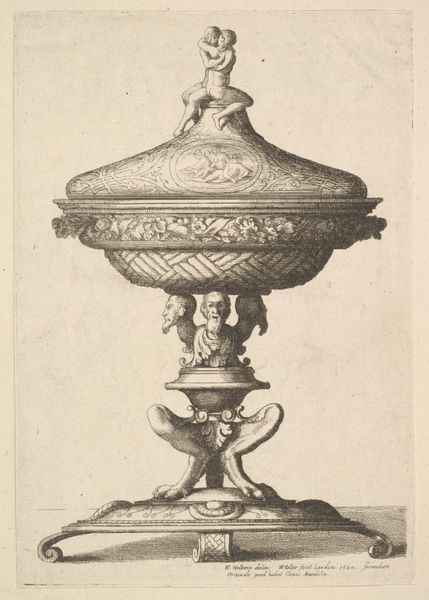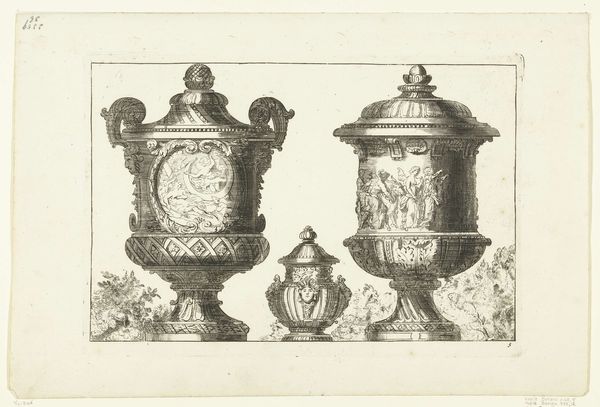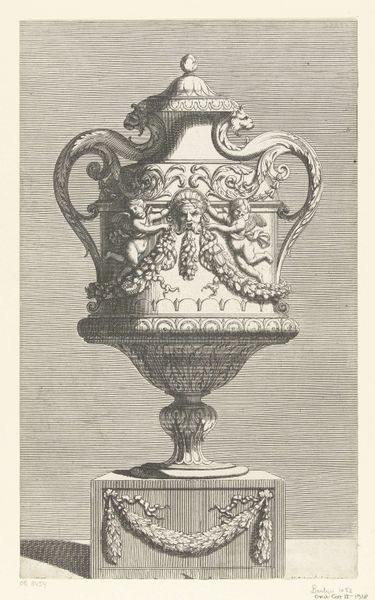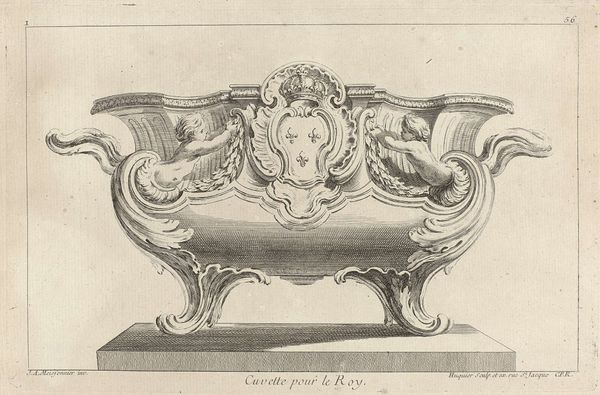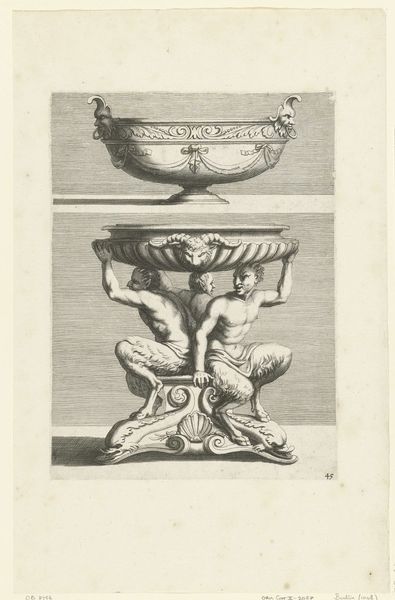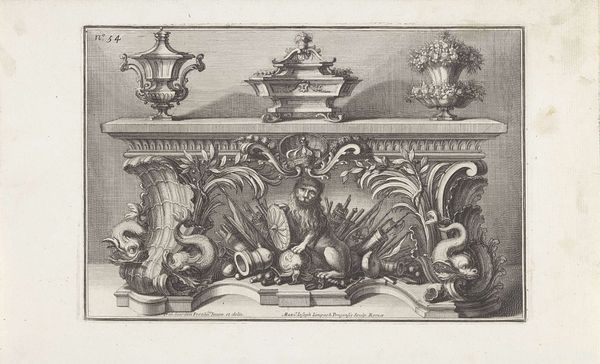
print, metal, engraving
# print
#
metal
#
11_renaissance
#
northern-renaissance
#
engraving
Dimensions: height 139 mm, width 180 mm
Copyright: Rijks Museum: Open Domain
Curator: Before us, we have "Terrine," an engraving by René Boyvin, dating from approximately 1542 to 1580. It's a meticulously detailed rendering of a decorative serving dish, housed right here at the Rijksmuseum. Editor: My goodness, it's baroque without being colorful. The intricacy is almost overwhelming. You're immediately drawn to the sheer complexity of the lines, the depth created through such precise etching. There's a heaviness, a solemn grandeur to the object that this rendering captures beautifully. Curator: Indeed. The engraving showcases not only Boyvin's mastery of the medium but also the period's fascination with ornate design and symbolic imagery in daily life. This period embraced excess in the details, right? Editor: Exactly. Note the interwoven patterns, the figures sculpted within the relief—miniature scenes. It is all arranged on top of one another. The form of the object is interesting; however, all detail is equal. One is not more important than the other, is what the artist expresses here. Curator: Beyond pure decoration, this kind of vessel signals social status and a culture steeped in classical references. During the Renaissance, dining became increasingly performative. Expensive tableware was crucial to social performance, and engravings like this allowed these objects to gain broader audiences through circulation of the images. Editor: The cherubic figures, combined with the classical heads, reinforce your thought on symbolism and its link to performativity. And is that a narrative scene I see around the center, under the handles of the vessel? What does that convey to the people that may have been at these occasions? Curator: Precisely, one can observe the influence of humanist learning and revival of classical art during this time. The ability to decode these stories elevates one’s status through recognition of knowledge. That is, until artists in the 19th century began stripping details from art. But back in 16th-century France, detail signified opulence and worldliness, wouldn’t you say? Editor: Most definitely, a beautiful confluence of function, symbolism, and superb draftsmanship. This piece makes me reflect on all the ways that ordinary life becomes ennobled when viewed as more than quotidian necessity. Curator: For me, contemplating the artistry behind this functional piece highlights how Renaissance culture merged everyday activities with high art and complex visual metaphor, so essential to an understanding of Renaissance society.
Comments
No comments
Be the first to comment and join the conversation on the ultimate creative platform.


